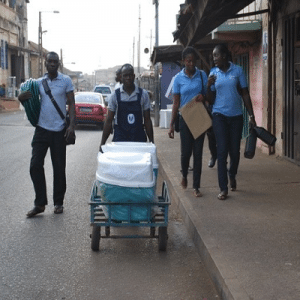
Agriculture
January 19, 2024
Clean Team Toilet and Clean Team Toilet Waste Management Service
Read SolutionImplemented by
Clean Team Ghana

Updated on August 8, 2024
·Created on July 11, 2016
The Banza toilet is a waterless, mobile, urine-diverting toilet.
The Banza Toilet is a sanitation solution in response to the lack of adequate facilities for families in informal settlements worldwide. Compact and foldable, the Banza Toilet can be utilized when space is limited. The product uses biodegradable bags for human waste containment and disposal, providing a hygienic means of handling human waste for toilet users and service providers.Interview with designer
This product has been discontinued to our knowledge as of 2018.
Target SDGs
SDG 6: Clean Water and Sanitation
Target Users (Target Impact Group)
Household, Community
Distributors / Implementing Organizations
Banza Sanitation
Competitive Landscape
Direct competitors include Peepoo Personal Toilet.
Countries
Kenya
Manufacturing/Building Method
Toilets are manufactured on-demand in Kenya.Interview with designer
Intellectural Property Type
Trade Secret
User Provision Model
Service organizations typically will purchase the toilet and provide them on a community-wide basis to families together with the necessary services of collecting and processing of waste. They also have potential to be distributed among NGOs and related agencies that conduct disaster relief operations or operate refugee encampments. Banza has identified interest among rural residents and individuals that are home-bound and have difficulty accessing public sanitation facilities.Interview with designer
Distributions to Date Status
100 prototypes
Toilet type
Container-based service
Evacuation method
Dry
Storage conditions
Container storage
Capacity (L)
Unknown
Time until emptying
Emptied when biodegradable bags are full
Design Specifications
The toilets separate solid and liquid waste to optimize collection and processing. The seats are designed to seal the toilet when closed to minimize odors. The toilets are ergonomically designed to be compact for homes with limited space and they use biodegradable bags for human waste containment and disposal. These bags contain no plastic, and while durable, they dissolve in water or when composted.Interview with designer
Experts indicate that further details are needed regarding disposal guidance/process for the provided bags (i.e. Who collects the bags? Where is the waste brought?).
Technical Support
Support provided by a specialized technician from Banza Sanitation. The Banza Sanitation system can be replicated in informal settlements with a minimum of infrastructure, government involvement, financing or concerns of user acceptance or environmental issues.Interview with designer
Replacement Components
Components are available in country for repair and replacement. Interview with manufacturer
Lifecycle
Service providers recover any toilets that are defective or at end-of-life.Interview with representative
Manufacturer Specified Performance Parameters
Internal performance targets have not been released.
Vetted Performance Status
Unknown
Safety
It is recommended that protective clothing is used while handling waste material.Interview with designer
Complementary Technical Systems
None
Academic Research and References
Kiriku, J., 2014, Banza toilets: a pilot study for sanitation solutions in Kenya. Grand Challenges Canada
Goal 6. Available: https://sdgs.un.org/goals/goal6
Compliance with regulations
None
Evaluation methods
Field testing.Interview with designer
Other Information
Check out their promotional video here.

Agriculture
January 19, 2024
Implemented by
Clean Team Ghana

Agriculture
December 19, 2023
Implemented by
Wostman
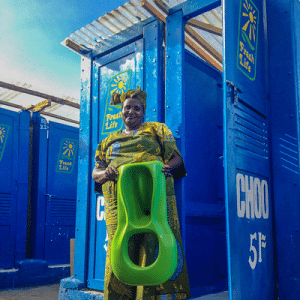
Agriculture
August 17, 2024
Implemented by
Sanergy
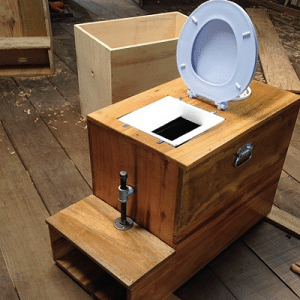
Agriculture
January 2, 2024
Implemented by
Toilets for People
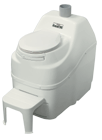
Agriculture
August 13, 2024
Implemented by
Sun-Mar
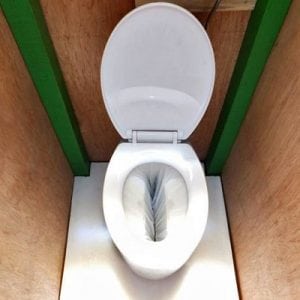
Agriculture
December 20, 2023
Implemented by
Loowatt
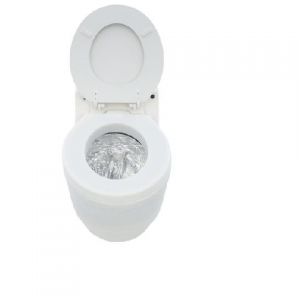
Agriculture
December 20, 2023
Implemented by
Dry Flush
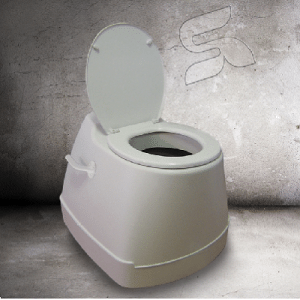
Agriculture
December 21, 2023
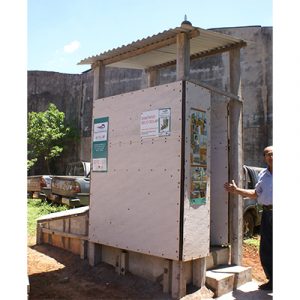
Agriculture
January 17, 2024
Implemented by
Centro de Desarrollo del Habitat y el Medio Ambiente (CEDES/Habitat)
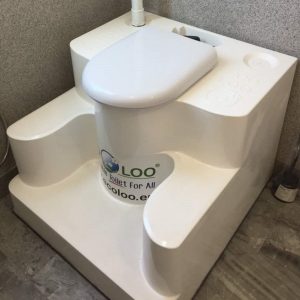
Agriculture
August 16, 2024
Implemented by
Ecoloo
Have thoughts on how we can improve?
Give Us Feedback
I question the capability to produce 1,000,000 pads with Saathi’s current setup. If my information is correct, I estimate their daily production to be less than 1,000 pads. It would take them 3 years to make 1,000,000 pads. Unless they have a production of about 4,000 pads per day they would not meet an annual production of 1,000,000 pads.
Using banana fibers as absorbent is a very good idea. Converting agro-waste (i.e. banana plant trunks) into sellable fibers creates jobs and additional income for banana farmers. Banana fibers can be converted into fluff pulp that can deliver the absorbency and properties needed in napkins.
How and why does Saathi sterilize the pads? Sanitary napkins are normally not sterile, they just have to meet the microbiological requirements of the governing body (expressed as a maximum bioburden, measured in cfu)
Emily says:
There seems to be very little information available about Banza Sanitation, and their website has not been updated since 2013. It is not clear what their business model is. It seems like they are similar to PeePoo bags, offering compostable paper bags to collect the waste, but where do the users dispose of their bags?
Emily says:
Toilet type: urine-diverting dry toilet (UDDT).
Emily says:
Product description: I would add that the toilet is urine-diverting (UDDT).
Emily says:
Manufacturing/building method: According to their Facebook page, the bio-bags are manufactured in Belgium (https://www.facebook.com/ba… ) and the frames are manufactured in Taiwan (https://www.facebook.com/ba… ).
Banza Toilet:
Target product user(s): Household
Pricing structure: unknown
Treatment method: unknown